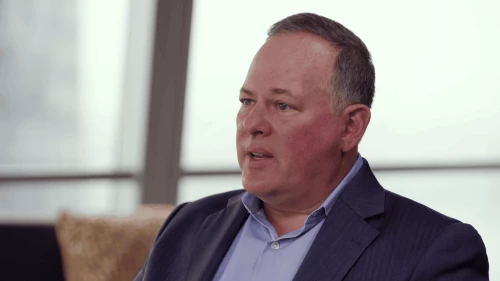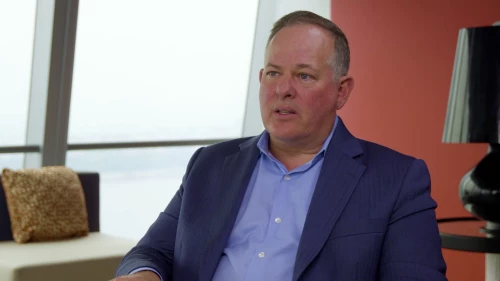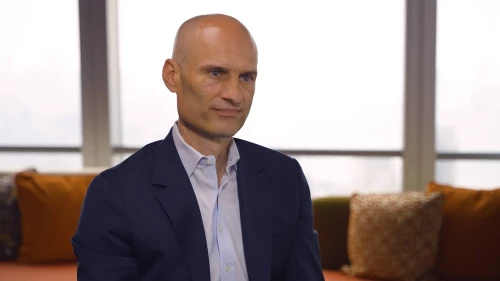M&A can play a central role in bringing strategies to life. Moody’s has evolved from the leading provider of bond ratings into the preeminent purveyor of integrated risk management services—and transactions have been at the heart of that transformation. In this interview, David Platt, Moody’s senior vice president and chief strategy officer, sat down with BCG’s Julien Ghesquieres to discuss the role of M&A in Moody’s journey. The interview has been edited for length and clarity.
Since its beginning, Moody’s has always helped its customers make smarter decisions about risk. How has the landscape of risk evolved, and how has Moody’s evolved in response?
Platt: Let me step back and talk big picture about risk. The ability to understand, measure, and manage risk really has changed dramatically over my career. Back in the early 1990s, when I was a buy-side analyst at Fidelity Investments, risk software was just beginning its evolution. You had primitive versions of Excel, you had research libraries with CD ROMs, books, magazines. And the public internet? That was pretty much in its infancy. Risk analysis was more artisanal. Passed down. It was kind of like a guild. Information moved much more slowly. We relied more on people, our networks, the people we know, and even just reading the newspapers and listening to the evening news.
Today, thanks to technology, we have both the ability and the need to see how risks are interconnected. In fact, when I started my career, many of the risks we think about today weren’t even on the radar. Think cyber risk, hacking, environmental, social and governance, climate, supply chain. Back in the day, when you said “supply chain,” people were really talking about getting the cost down as low as possible and getting things to market quickly. That is very different than what we’re talking about today.
For over a hundred years, Moody’s primary role in the risk ecosystem was issuing credit ratings for bonds. In 2007, we created Moody’s Analytics to monetize the vast amounts of data in the orbit of the rating agency. And, coming out of the great financial crisis, we started to experiment. We started to think about exploring adjacent markets and we asked ourselves a simple question: “How can we better serve our customers?” We looked at commercial real estate, private company data, counterparty risk, and again, 10 years back, the then-emerging risks of ESG, climate, and cyber. We imagined moving beyond leadership in credit risk to become the trusted provider of global integrated risk assessment.
M&A has been a critical unlock for Moody’s integrated risk assessment journey. Please share your thoughts about the “build vs. buy” decision.
Platt: I have a counterintuitive answer, particularly for an M&A guy. In my perfect world, all growth would be organic. Why? Because the things that you build yourself with—the ingredients in the cupboard—have the highest return profile. That’s a fact.
Sometimes it’s hard to do it yourself. Senior management has many objectives and demands and things to do on their plate and something you thought might get done in, say, six months and cost $100 might get lost in the shuffle. Maybe it’s done in 18 months, and it costs $200, but some other competitor got there first, and they built the capability, recruited the subject matter experts, or whatever. You’ve got to be honest with yourself. Is whatever we’re talking about a nice-to-have or a need-to-have?
If it is really important and there’s a real revenue opportunity, a customer value proposition that’s unmet, and you can buy something at scale and achieve an appropriate risk-adjusted return on the capital and also get great new colleagues in the bargain, then it’s probably better to buy than build.
And here’s the thing: an integration starts during due diligence. You’ve got to start planning for how people are going to work together to combine the best of what you have and the best of what they have. There can’t be an attitude of “not invented here” where incumbency wins. That does not work. The people that you are working with on the diligence process, if everything goes right, they’re going to be your colleagues and potential new leaders. Remember, we are talking about people—people are not assets—and people want to feel wanted and they want to feel valued.
Moody’s has focused largely on non-competitive deals. Please tell me more about the concept of proprietary M&A.
Platt: I believe strongly in proprietary M&A. I’ve talked earlier about people. Relationships and trust are critical. People who are selling their company need to feel that they are finding the right home. They want culture. They want values.
I’m interested in transacting, but you’ve got to be patient. Some things, they just take time. Frankly, I’m untroubled about how long things take. The real point is to be ready. You need to know the companies that you care about—and where there might be shared opportunity.
For that, you must build relationships with their leaders. One of the great things about being Moody’s, a hundred-plus-year-old company, is that we’re patient and we are focused on the long game, which in our case and what we say to ourselves is being positioned for the next hundred years.
What have been the key steps in bringing Moody’s integrated risk assessment vision to life?
Platt: A key move was our purchase of Bureau van Dijk in 2017, which is a global leader of private-company and ownership data. It was really a step change for Moody’s—and at €3 billion, it was our largest-ever deal. That transaction coalesced a lot of the thinking and the experimentation that we had been doing over many years, including the idea that our customers would see real value in a Moody’s platform with aggregated, cleansed, and curated data that was an integral part of their workflows.
Having data about a company, its financials, its ownership structure—that really opened the aperture for us. It became the chassis for many of our now-highest growth businesses, such as “know your customer,” “know your supplier,” and “anti-money laundering.” What it also did was it brought us significant new customers beyond financial institutions and exceptionally rich data sets—for example, tax transfer pricing, which is data used by governments.
Our next large deal was Regulatory Data Corporation. That was in 2020, and this transaction provided rich data on politically exposed people. I like to think of it as a universe of complicated individuals. It gave us the ability to help our customers further understand who was on the other side of the trade and whether they were problematic—and make the call whether it was worth the risk to engage. As we moved forward, in 2021, we bought RMS, the largest provider of climate and peril-related data along with modeling and analytics that serves the global insurance industry. This transaction was about $2 billion, and it was years in the making. We had wanted to do RMS for a long time because it brought a treasure trove of data and exceptional people to Moody’s.
Then literally a few weeks later, we announced a strategic investment in Bitsight Technologies and embarked on a partnership with their great team to build the world’s leading cybersecurity risk assessment standard.
In each case, whether Bureau van Dijk, Regulatory Data Corporation, RMS, or Bitsight, one of the most important value drivers of the deals was the people. In these transactions, we gained access to great data and analytics, but even more importantly, we gained terrific new colleagues with shared values and vision to help our customers navigate a fast moving and complicated world.








